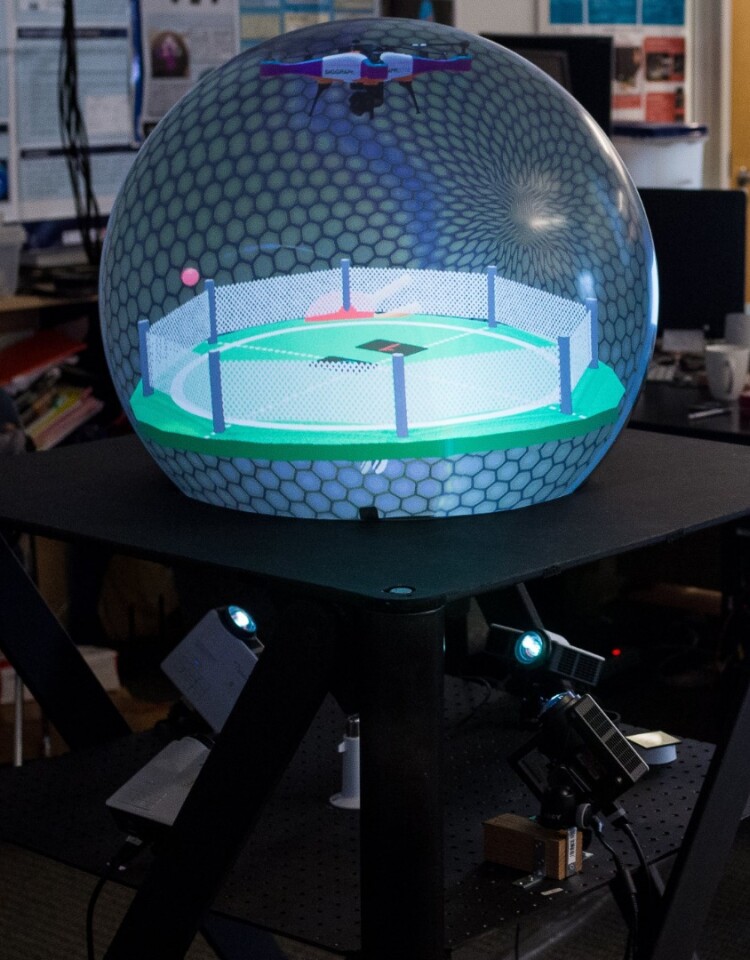A team of researchers from the Universities of British Columbia and Saskatchewan has built a nifty-looking crystal ball display that can produce 3D images for up to two simultaneous users, clearing the path for head-in-a-ball style teleconferencing and new kinds of 3D multiplayer gaming.
The 24-inch crystal ball uses four precisely calibrated, high speed projectors to build out a spherical image. Up to two participants can view the ball at a time, using what appear to be lightweight motion trackable frequency separation glasses. We've seen these kinds of things before powering Euclideon's remarkable hologram table displays.

The system will effectively produce a separate image for each viewer, based on their motion-tracked position relative to the crystal ball. All these images will be projected together onto the ball's surface, and the glasses will filter out everything except the user's own view. The team plans to build the design out to handle up to four viewers in the future.
When it comes to head-in-a-ball telepresence, it appears the caller will only need to use a single camera. That leads us to believe that the head on the ball will always be pointing directly at you, wherever you go in the room, so you won't be able to walk around behind the ball and see the back of your colleague's head.

For 3D animations, CAD diagrams and video gaming, though, there's no reason why the system couldn't build a totally different image for each user, representing different viewpoints on the same miniature world inside the crystal ball - again, something the Euclideon system does very effectively.
One thing the crystal ball can do that Euclideon can't at this point is to offer touch sensitivity across the entire surface of the screen, allowing tactile interaction which could definitely come in handy. That said, keep in mind that the crystal ball is just a research project at this stage.
Source: University of British Columbia








